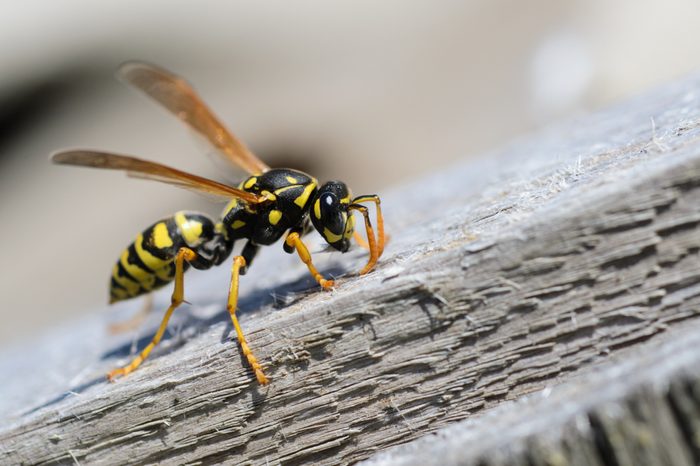
Some wasps turn caterpillars into zombies to protect their babies
The Glyptapanteles wasp, also widely known as the voodoo wasp, impregnates a caterpillar with about 80 eggs at a time. Once the eggs hatch, the wasp larvae feed on the caterpillar’s body fluids, which somehow transfix the caterpillar into a zombie-like state. Then, the fully developed wasps start to eat through the caterpillar’s skin so they can attach themselves to a branch and wrap themselves up into a cocoon. The caterpillar arches its body over the cocoons like a personal bodyguard keeping them out of harm’s way. If any predators dare to come near the babies, the caterpillar wildly thrashes about to scare them away. After the adult wasps hatch, the caterpillars die soon after their days of loyal wasp protector come to an end. Check out the 10 most dangerous bugs you need to watch out for in the summer.
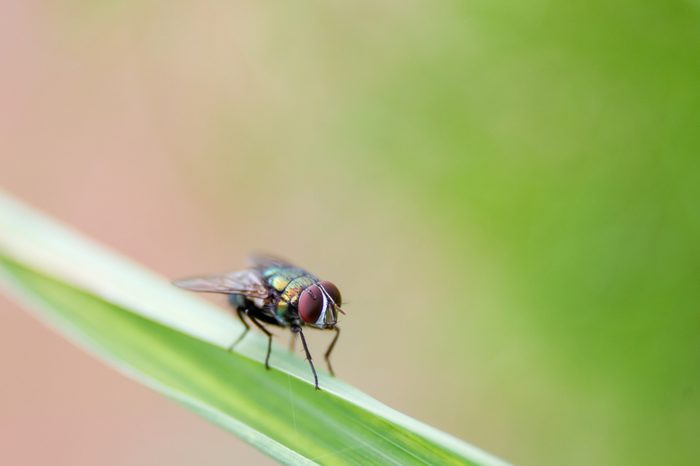
Houseflies eat their own vomit
As if you needed another reason to loathe flies, you can also add this item to the list. Houseflies use their feet to taste things because they don’t have mouths to bite or chew food. If they find something yummy, they vomit on it because the puke contains digestive enzymes that help break down the food. The vomit allows flies to use their sponge-like tongue to soak up the barf and get the nutrients they need. Make sure you know which seemingly “harmless” bugs can actually bite you.
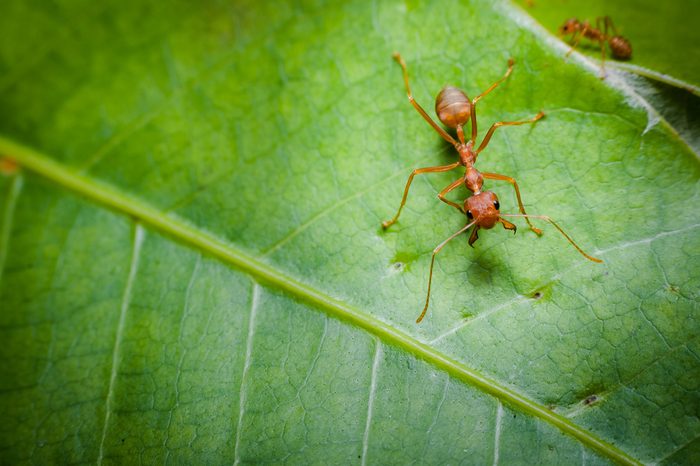
Some ants make themselves explode when they’re attacked
The latest addition to the exploding ant species are the Colobopsis explodens, ants that kill themselves to protect their colony by splitting their skin open and coating their enemies in a yellow goo that either kills the intruder or hinders its attack. These self-sacrificing ants are nothing more than the minor workers of the colony or better known as “the expendables.”
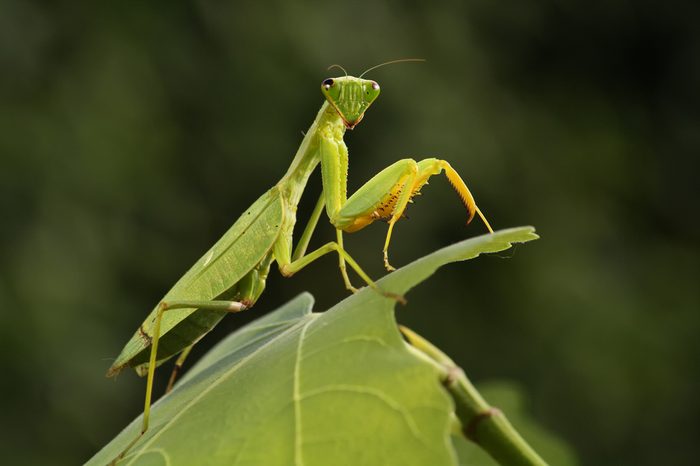
Praying mantises eat each other while they mate
The mating ritual of praying mantises is anything but loving, it’s actually quite violent. Once the male impregnates the female, it’s off with his head—literally. After several hours of mating, the female patiently awaits the perfect opportunity t to devour her lover’s head. Despite the male’s brutal fate, his dying spasms pump more sperm into her abdomen. Once she’s had her fill of his head, she starts in on his carcass for further nourishment to help her lay nearly 200 eggs.
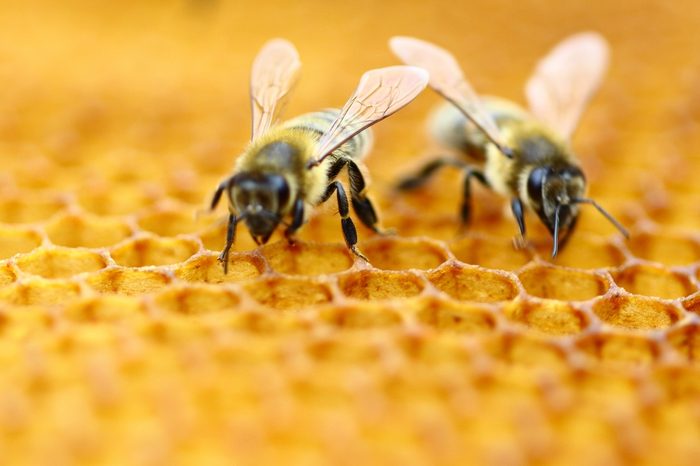
Honeybee queens quack
Only one queen can reign in the beehive. If more than one queen lives in the hive, a process called piping occurs. Virgin queen bees and mated queen bees use piping as a heads up to the colony that they’re ready to fight to their death for the title of reigning queen. These sounds typically come in the form of quacking when they’re in their comb cells or a toot when they’re outside. They also use piping as a way to rally worker bees behind their fight for the queen bee. It’s typically a battle of stinging until only one queen remains. These 15 gross animal species will give you the heebie-jeebies.
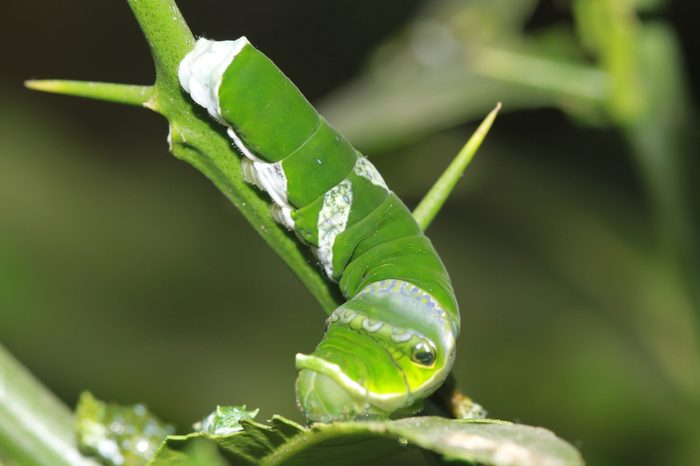
Some caterpillars can camouflage themselves as bird poop
The black and yellow Asian swallowtail butterfly looks much different in its early caterpillar stages. In fact, the caterpillar’s black and white spine makes it look like bird droppings. The unique coloring fools predatory birds into thinking the caterpillars are nothing more than bird poop. Researchers say that once a specific hormone reaches a given level, the caterpillar will transform into a vibrant green larvae that blends in with the leaves until it reaches its butterfly phase.
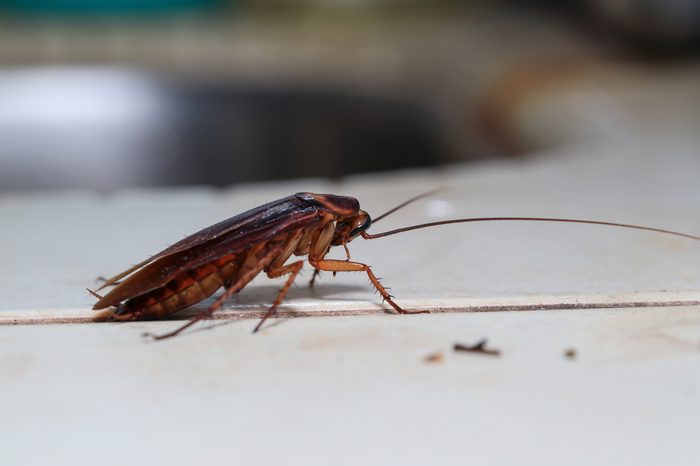
Cockroaches can live up to a week without their heads
Cockroaches breathe through little holes in their body segments, known as spiracles instead of their heads. A cockroach can live for a short time after it’s been decapitated because its brain doesn’t control its breathing and blood doesn’t carry oxygen throughout its body like a human’s does. In fact, the spiracles deliver oxygen from the air to its tissues through the tiny tubes of the tracheae. Eventually, the cockroach will die due to starvation since the one thing it actually needs its head for is to eat. Check out the most roach-infested city in America.
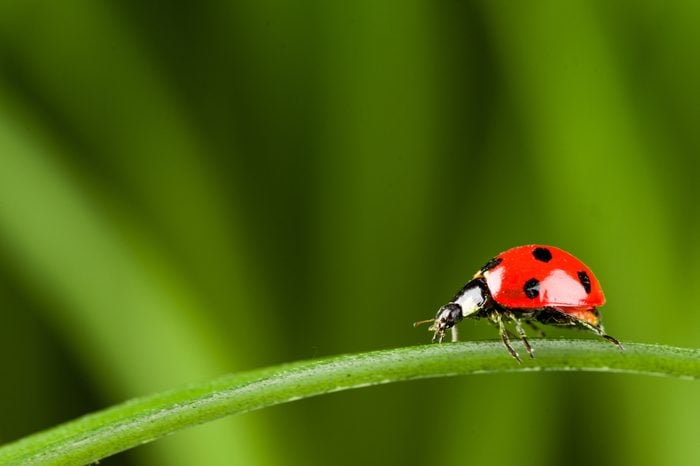
Ladybugs squirt smelly liquid from their knees
When a ladybug is frightened, it often emits a stinky, lingering odor from its knees to deter predators. In a study conducted by Iowa State University researchers, they found that the characteristic smell of a ladybug’s emissions is a ghastly mixture of nuts, green bell pepper, potato, and moldy odors. They usually spray it to deter predators.
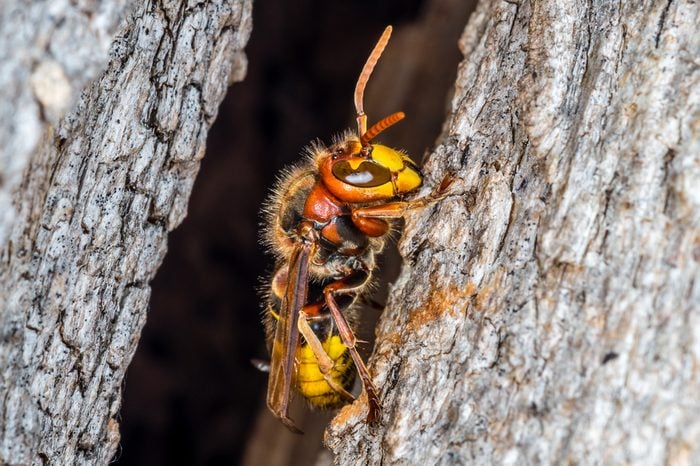
Asian giant hornets can make holes in human flesh
These insects are the largest hornet species on the planet measuring in at about 2.2 inches and flying in at a speed of 25 miles per hour. The Asian giant hornet is the one hornet you don’t want to get stung by because its venom dissolves the skin and attacks your nervous system. The good news is that the hornets live far away in the tropical and temperate regions of eastern Asia. Here are the best ways to treat every type of bug bite or sting.
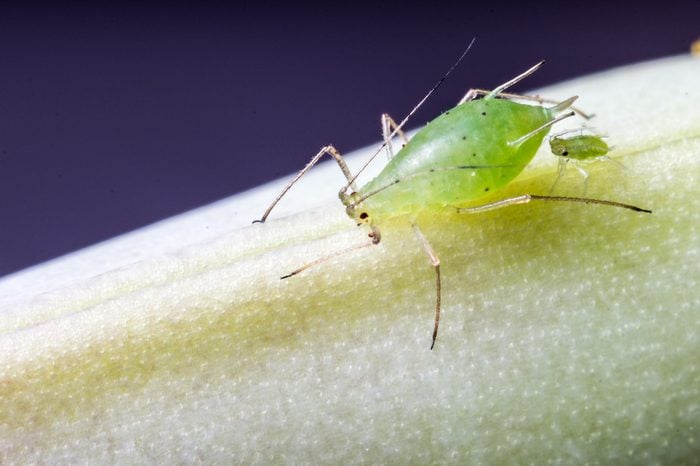
Aphids are born pregnant
Aphids are small, soft-bodied insects that feed on plants in clusters. Nymphs are young aphids that hatch from eggs and come out of their mother’s bodies alive, unlike most insects. The strange phenomenon is that all nymphs are born as pregnant females because they don’t need a male to reproduce. At just ten days old, these little bugs often give birth. It sounds pretty wild especially since a human baby could never do that!
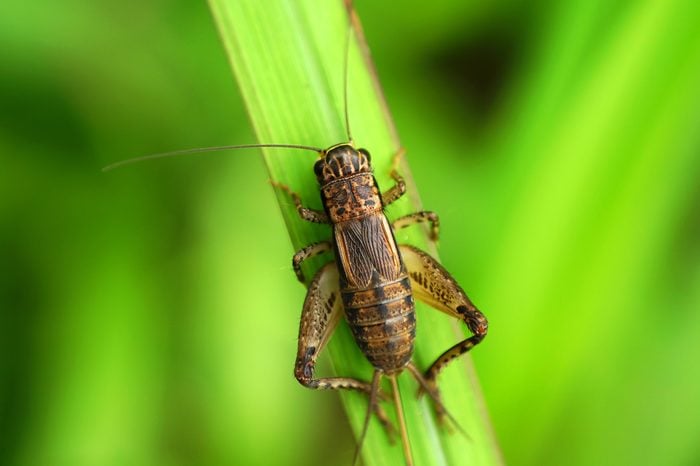
Crickets detect sound through their legs
Unlike most living things, a cricket’s ears are located on its front legs just below the knees. Sound can pass through a cricket’s entire body because the openings in its legs lead into chambers that connect to either side of its body. This helps the bug determine what direction sounds are coming from simply by turning one way or another.
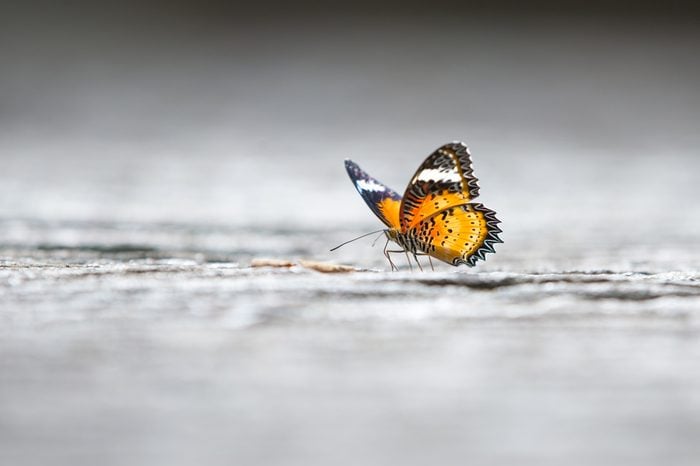
Butterflies can smell each other from miles away
Aside from their bright, vibrant colors, butterflies also release chemical signals like pheromones to lure in potential mates. In fact, male butterflies can detect some female pheromones from 10 miles away! “During the first stages of finding a partner, males optimistically chase after almost any small, moving object. This includes leaves, bees, and butterflies of any species – of either sex,” said Dr. Alberto Zilli, curator at the Natural History Museum in London, England. “When they get closer, they can start working out if they’ve found the right match, by judging colors, pheromones, and behavior.”
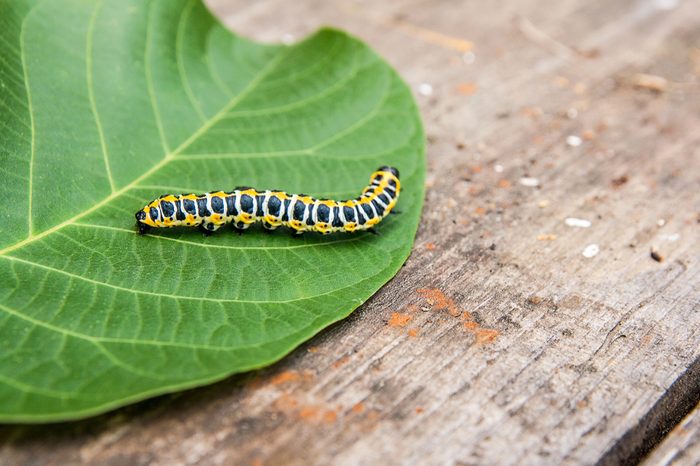
A caterpillar has more muscles than a human
The human body has more than 650 skeletal muscles and some figures go up to 840 depending on how experts count the muscles within a complex muscle. But caterpillars have a whopping 4,000 muscles with 248 muscles just in their head alone. They need a lot of muscles to help push blood from their rear segments into their front segments to elongate the torso and move them along. Make sure you know the 15 sneaky signs your home is about to be infested with bugs and pests!